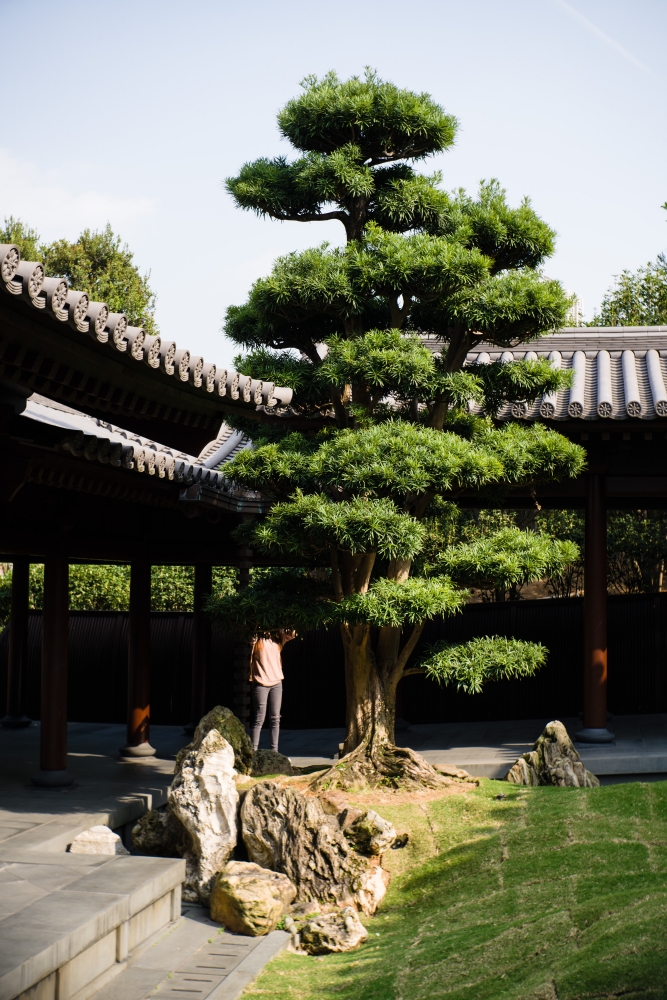| View previous topic :: View next topic |
| Author |
Message |
calvin83


Joined: 12 Apr 2009
Posts: 7554
Location: Hong Kong
|
 Posted: Fri Feb 16, 2018 1:13 pm Post subject: Corfield England APO-Lumar 50mm F3.5 on A7R II Part I Posted: Fri Feb 16, 2018 1:13 pm Post subject: Corfield England APO-Lumar 50mm F3.5 on A7R II Part I |
 |
|
calvin83 wrote:
The lens:

This lens is one of the rare lens from Corfield. It is probably one of the earliest post-war enlarger with 'APO' designation although it is only a triplet. 
Click to enlarge:
#1

#2

#3

#4

#5

#6

#7

P.S. The hood I used is a bit too long for this lens and the adapter seems not perfectly aligned. Part II will follow when I get better photos after I fix the two issues.
_________________
https://lensfever.com/
https://www.instagram.com/_lens_fever/
The best lens is the one you have with you. |
|
| Back to top |
|
 |
Himself

Joined: 01 Mar 2007
Posts: 3215
Location: Montreal
Expire: 2013-05-30
|
 Posted: Fri Feb 16, 2018 2:27 pm Post subject: Posted: Fri Feb 16, 2018 2:27 pm Post subject: |
 |
|
Himself wrote:
Looking good so far. I see no CA along the ridges . How about you at 100%?
What mount is?
_________________
Moderator Himself |
|
| Back to top |
|
 |
calvin83


Joined: 12 Apr 2009
Posts: 7554
Location: Hong Kong
|
 Posted: Fri Feb 16, 2018 3:08 pm Post subject: Posted: Fri Feb 16, 2018 3:08 pm Post subject: |
 |
|
calvin83 wrote:
I think it may be too harsh to pixel peep to check the CA for a triplet... I would say the CA is not quiet visible even under harsh condition.
The mount is M39.
_________________
https://lensfever.com/
https://www.instagram.com/_lens_fever/
The best lens is the one you have with you. |
|
| Back to top |
|
 |
Lightshow


Joined: 04 Nov 2011
Posts: 3669
Location: Calgary
|
 Posted: Fri Feb 16, 2018 4:21 pm Post subject: Posted: Fri Feb 16, 2018 4:21 pm Post subject: |
 |
|
Lightshow wrote:
Looks quite good to me.
_________________
A Manual Focus Junky...
One photographers junk lens is an artists favorite tool.
My lens list
http://www.flickr.com/photos/lightshow-photography/ |
|
| Back to top |
|
 |
kds315*


Joined: 12 Mar 2008
Posts: 16544
Location: Weinheim, Germany
Expire: 2021-03-09
|
 Posted: Fri Feb 16, 2018 4:23 pm Post subject: Posted: Fri Feb 16, 2018 4:23 pm Post subject: |
 |
|
kds315* wrote:
   wow what a rare lens! wow what a rare lens!
(I honestly doubt that 6 lens surfaces are enough to allow for an apochromatic correction...
but it looks surprisingly well!!)
_________________
Klaus - Admin
"S'il vient a point, me souviendra" [Thomas Bohier (1460-1523)]
http://www.macrolenses.de for macro and special lens info
http://www.pbase.com/kds315/uv_photos for UV Images and lens/filter info
https://www.flickr.com/photos/kds315/albums my albums using various lenses
http://photographyoftheinvisibleworld.blogspot.com/ my UV BLOG
http://www.travelmeetsfood.com/blog Food + Travel BLOG
https://galeriafotografia.com Architecture + Drone photography
Currently most FAV lens(es):
X80QF f3.2/80mm
Hypergon f11/26mm
ELCAN UV f5.6/52mm
Zeiss UV-Planar f4/60mm
Zeiss UV-Planar f2/62mm
Lomo Уфар-12 f2.5/41mm
Lomo Зуфар-2 f4.0/350mm
Lomo ZIKAR-1A f1.2/100mm
Nikon UV Nikkor f4.5/105mm
Zeiss UV-Sonnar f4.3/105mm
CERCO UV-VIS-NIR f1.8/45mm
CERCO UV-VIS-NIR f4.1/94mm
CERCO UV-VIS-NIR f2.8/100mm
Steinheil Quarzobjektiv f1.8/50mm
Pentax Quartz Takumar f3.5/85mm
Carl Zeiss Jena UV-Objektiv f4/60mm
NYE OPTICAL Lyman-Alpha II f1.1/90mm
NYE OPTICAL Lyman-Alpha I f2.8/200mm
COASTAL OPTICS f4/60mm UV-VIS-IR Apo
COASTAL OPTICS f4.5/105mm UV-Micro-Apo
Pentax Ultra-Achromatic Takumar f4.5/85mm
Pentax Ultra-Achromatic Takumar f5.6/300mm
Rodenstock UV-Rodagon f5.6/60mm + 105mm + 150mm
|
|
| Back to top |
|
 |
iangreenhalgh1


Joined: 18 Mar 2011
Posts: 15685
Expire: 2014-01-07
|
 Posted: Fri Feb 16, 2018 9:36 pm Post subject: Posted: Fri Feb 16, 2018 9:36 pm Post subject: |
 |
|
iangreenhalgh1 wrote:
Actually, the lens may well be apochromatic, or damn close to it, certainly closer than many modern lenses marked APO.
I say this because Voigtlander recalculated their lenses after WW2 to use the then new Lanthanum glass - the Skopar became the Color-Skopar and it is damn close to being apochromatic, they also made triplets with Lanthanum, they had various names such as Color-Lanthar.
This Corfield is made by Enna, and I bet it, like the Voigtlanders, uses a Lanthanum glass element, so it may well, like the Voigtlanders, be close to apochromatic.
_________________
I don't care who designed it, who made it or what country it comes from - I just enjoy using it! |
|
| Back to top |
|
 |
visualopsins


Joined: 05 Mar 2009
Posts: 10543
Location: California
Expire: 2025-04-11
|
 Posted: Fri Feb 16, 2018 11:50 pm Post subject: Posted: Fri Feb 16, 2018 11:50 pm Post subject: |
 |
|
visualopsins wrote:
Zeiss indicates 3 groups is sufficient. http://lenspire.zeiss.com/en/apochromat/
_________________
☮☮☮☮☮☮☮☮☮☮☮☮☮☮☮☮☮☮☮☮☮☮☮☮☮☮☮☮☮☮☮☮ like attracts like! ☮☮☮☮☮☮☮☮☮☮☮☮☮☮☮☮☮☮☮☮☮☮☮☮☮☮☮☮☮☮☮☮
Cameras: Sony ILCE-7RM2, Spotmatics II, F, and ESII, Nikon P4
Lenses:
M42 Asahi Optical Co., Takumar 1:4 f=35mm, 1:2 f=58mm (Sonnar), 1:2.4 f=58mm (Heliar), 1:2.2 f=55mm (Gaussian), 1:2.8 f=105mm (Model I), 1:2.8/105 (Model II), 1:5.6/200, Tele-Takumar 1:5.6/200, 1:6.3/300, Macro-Takumar 1:4/50, Auto-Takumar 1:2.3 f=35, 1:1.8 f=55mm, 1:2.2 f=55mm, Super-TAKUMAR 1:3.5/28 (fat), 1:2/35 (Fat), 1:1.4/50 (8-element), Super-Multi-Coated Fisheye-TAKUMAR 1:4/17, Super-Multi-Coated TAKUMAR 1:4.5/20, 1:3.5/24, 1:3.5/28, 1:2/35, 1:3.5/35, 1:1.8/85, 1:1.9/85 1:2.8/105, 1:3.5/135, 1:2.5/135 (II), 1:4/150, 1:4/200, 1:4/300, 1:4.5/500, Super-Multi-Coated Macro-TAKUMAR 1:4/50, 1:4/100, Super-Multi-Coated Bellows-TAKUMAR 1:4/100, SMC TAKUMAR 1:1.4/50, 1:1.8/55
M42 Carl Zeiss Jena Flektogon 2.4/35
Contax Carl Zeiss Vario-Sonnar T* 28-70mm F3.5-4.5
Pentax K-mount SMC PENTAX ZOOM 1:3.5 35~105mm, SMC PENTAX ZOOM 1:4 45~125mm
Nikon Micro-NIKKOR-P-C Auto 1:3.5 f=55mm, NIKKOR-P Auto 105mm f/2.5 Pre-AI (Sonnar), Micro-NIKKOR 105mm 1:4 AI, NIKKOR AI-S 35-135mm f/3,5-4,5
Tamron SP 17mm f/3.5 (51B), Tamron SP 17mm f/3.5 (51BB), SP 500mm f/8 (55BB), SP 70-210mm f/3.5 (19AH)
Vivitar 100mm 1:2.8 MC 1:1 Macro Telephoto (Kiron)
|
|
| Back to top |
|
 |
iangreenhalgh1


Joined: 18 Mar 2011
Posts: 15685
Expire: 2014-01-07
|
 Posted: Sat Feb 17, 2018 12:10 am Post subject: Posted: Sat Feb 17, 2018 12:10 am Post subject: |
 |
|
iangreenhalgh1 wrote:
Yes, there are a lot of older process lenses that are fully apochromatic but have simple 3 or 4 group designs - most are either 4e/3g Tessar/Xenar/Skopar types or 4e/4g Dialytes.
_________________
I don't care who designed it, who made it or what country it comes from - I just enjoy using it! |
|
| Back to top |
|
 |
calvin83


Joined: 12 Apr 2009
Posts: 7554
Location: Hong Kong
|
 Posted: Sat Feb 17, 2018 2:01 am Post subject: Posted: Sat Feb 17, 2018 2:01 am Post subject: |
 |
|
calvin83 wrote:
I have tried Color-Lanthar in DKL too. The Color-Lanthar, which is also a triplet, hardly show any CA under back lit or high contrast scene. It is better than this lens for general photography.
Here is the 100% crop as requested. Do you agree it is a APO lens? 

100% crop

_________________
https://lensfever.com/
https://www.instagram.com/_lens_fever/
The best lens is the one you have with you. |
|
| Back to top |
|
 |
iangreenhalgh1


Joined: 18 Mar 2011
Posts: 15685
Expire: 2014-01-07
|
 Posted: Sat Feb 17, 2018 5:41 am Post subject: Posted: Sat Feb 17, 2018 5:41 am Post subject: |
 |
|
iangreenhalgh1 wrote:
I'd say it is APO, yes.
_________________
I don't care who designed it, who made it or what country it comes from - I just enjoy using it! |
|
| Back to top |
|
 |
Gerald


Joined: 25 Mar 2014
Posts: 1196
Location: Brazil
|
 Posted: Sat Feb 17, 2018 4:49 pm Post subject: Posted: Sat Feb 17, 2018 4:49 pm Post subject: |
 |
|
Gerald wrote:
In fact it is possible to make an APO lens with just 3 optical surfaces! Some examples here:
http://www.telescope-optics.net/semiapo_and_apo_examples.htm
The problem is that with only 3 optical surfaces it is not possible to properly correct the monochromatic aberrations (spherical, coma and astigmatism) for the apertures and angular coverage of a typical photography lens.
_________________
If raindrops were perfect lenses, the rainbow did not exist. |
|
| Back to top |
|
 |
calvin83


Joined: 12 Apr 2009
Posts: 7554
Location: Hong Kong
|
 Posted: Sat Feb 17, 2018 5:07 pm Post subject: Posted: Sat Feb 17, 2018 5:07 pm Post subject: |
 |
|
calvin83 wrote:
| Gerald wrote: |
In fact it is possible to make an APO lens with just 3 optical surfaces! Some examples here:
http://www.telescope-optics.net/semiapo_and_apo_examples.htm
The problem is that with only 3 optical surfaces it is not possible to properly correct the monochromatic aberrations (spherical, coma and astigmatism) for the apertures and angular coverage of a typical photography lens. |
 
_________________
https://lensfever.com/
https://www.instagram.com/_lens_fever/
The best lens is the one you have with you. |
|
| Back to top |
|
 |
visualopsins


Joined: 05 Mar 2009
Posts: 10543
Location: California
Expire: 2025-04-11
|
 Posted: Sat Feb 17, 2018 5:46 pm Post subject: Posted: Sat Feb 17, 2018 5:46 pm Post subject: |
 |
|
visualopsins wrote:
| Gerald wrote: |
In fact it is possible to make an APO lens with just 3 optical surfaces! Some examples here:
http://www.telescope-optics.net/semiapo_and_apo_examples.htm
The problem is that with only 3 optical surfaces it is not possible to properly correct the monochromatic aberrations (spherical, coma and astigmatism) for the apertures and angular coverage of a typical photography lens. |
6 optical surfaces...

I think Dr Schmidt is thinking about IR&UV.
Thanks Gerald for the highly technical reference!
_________________
☮☮☮☮☮☮☮☮☮☮☮☮☮☮☮☮☮☮☮☮☮☮☮☮☮☮☮☮☮☮☮☮ like attracts like! ☮☮☮☮☮☮☮☮☮☮☮☮☮☮☮☮☮☮☮☮☮☮☮☮☮☮☮☮☮☮☮☮
Cameras: Sony ILCE-7RM2, Spotmatics II, F, and ESII, Nikon P4
Lenses:
M42 Asahi Optical Co., Takumar 1:4 f=35mm, 1:2 f=58mm (Sonnar), 1:2.4 f=58mm (Heliar), 1:2.2 f=55mm (Gaussian), 1:2.8 f=105mm (Model I), 1:2.8/105 (Model II), 1:5.6/200, Tele-Takumar 1:5.6/200, 1:6.3/300, Macro-Takumar 1:4/50, Auto-Takumar 1:2.3 f=35, 1:1.8 f=55mm, 1:2.2 f=55mm, Super-TAKUMAR 1:3.5/28 (fat), 1:2/35 (Fat), 1:1.4/50 (8-element), Super-Multi-Coated Fisheye-TAKUMAR 1:4/17, Super-Multi-Coated TAKUMAR 1:4.5/20, 1:3.5/24, 1:3.5/28, 1:2/35, 1:3.5/35, 1:1.8/85, 1:1.9/85 1:2.8/105, 1:3.5/135, 1:2.5/135 (II), 1:4/150, 1:4/200, 1:4/300, 1:4.5/500, Super-Multi-Coated Macro-TAKUMAR 1:4/50, 1:4/100, Super-Multi-Coated Bellows-TAKUMAR 1:4/100, SMC TAKUMAR 1:1.4/50, 1:1.8/55
M42 Carl Zeiss Jena Flektogon 2.4/35
Contax Carl Zeiss Vario-Sonnar T* 28-70mm F3.5-4.5
Pentax K-mount SMC PENTAX ZOOM 1:3.5 35~105mm, SMC PENTAX ZOOM 1:4 45~125mm
Nikon Micro-NIKKOR-P-C Auto 1:3.5 f=55mm, NIKKOR-P Auto 105mm f/2.5 Pre-AI (Sonnar), Micro-NIKKOR 105mm 1:4 AI, NIKKOR AI-S 35-135mm f/3,5-4,5
Tamron SP 17mm f/3.5 (51B), Tamron SP 17mm f/3.5 (51BB), SP 500mm f/8 (55BB), SP 70-210mm f/3.5 (19AH)
Vivitar 100mm 1:2.8 MC 1:1 Macro Telephoto (Kiron)
|
|
| Back to top |
|
 |
kds315*


Joined: 12 Mar 2008
Posts: 16544
Location: Weinheim, Germany
Expire: 2021-03-09
|
 Posted: Sat Feb 17, 2018 10:49 pm Post subject: Posted: Sat Feb 17, 2018 10:49 pm Post subject: |
 |
|
kds315* wrote:
Yep, that's what I meant of course, an APO which not only corrects CA, but also the other aberrations to make it a suitable photographic lens ... sighh
_________________
Klaus - Admin
"S'il vient a point, me souviendra" [Thomas Bohier (1460-1523)]
http://www.macrolenses.de for macro and special lens info
http://www.pbase.com/kds315/uv_photos for UV Images and lens/filter info
https://www.flickr.com/photos/kds315/albums my albums using various lenses
http://photographyoftheinvisibleworld.blogspot.com/ my UV BLOG
http://www.travelmeetsfood.com/blog Food + Travel BLOG
https://galeriafotografia.com Architecture + Drone photography
Currently most FAV lens(es):
X80QF f3.2/80mm
Hypergon f11/26mm
ELCAN UV f5.6/52mm
Zeiss UV-Planar f4/60mm
Zeiss UV-Planar f2/62mm
Lomo Уфар-12 f2.5/41mm
Lomo Зуфар-2 f4.0/350mm
Lomo ZIKAR-1A f1.2/100mm
Nikon UV Nikkor f4.5/105mm
Zeiss UV-Sonnar f4.3/105mm
CERCO UV-VIS-NIR f1.8/45mm
CERCO UV-VIS-NIR f4.1/94mm
CERCO UV-VIS-NIR f2.8/100mm
Steinheil Quarzobjektiv f1.8/50mm
Pentax Quartz Takumar f3.5/85mm
Carl Zeiss Jena UV-Objektiv f4/60mm
NYE OPTICAL Lyman-Alpha II f1.1/90mm
NYE OPTICAL Lyman-Alpha I f2.8/200mm
COASTAL OPTICS f4/60mm UV-VIS-IR Apo
COASTAL OPTICS f4.5/105mm UV-Micro-Apo
Pentax Ultra-Achromatic Takumar f4.5/85mm
Pentax Ultra-Achromatic Takumar f5.6/300mm
Rodenstock UV-Rodagon f5.6/60mm + 105mm + 150mm
|
|
| Back to top |
|
 |
Palabrant
Joined: 14 Mar 2019
Posts: 3
Location: Wales uk
|
 Posted: Sat May 18, 2019 10:30 am Post subject: Posted: Sat May 18, 2019 10:30 am Post subject: |
 |
|
Palabrant wrote:
These early Corfield lenses were not made by Enna but are all British by the Birmingham Optical Company [BOLCO] who partly financed Corfield . |
|
| Back to top |
|
 |
pdccameras


Joined: 23 Aug 2009
Posts: 826
Location: Putnam, CT
Expire: 2014-08-11
|
 Posted: Sat May 18, 2019 5:12 pm Post subject: Posted: Sat May 18, 2019 5:12 pm Post subject: |
 |
|
pdccameras wrote:
Nice images - is this an enlarger lens?
P.
_________________
Canon 5D Mii, Canon 40D, Canon 350D IR, Sony A7 Mii, Sony Alpha-6000, a ton of lenses: AF & MF and too many cameras to count, all formats: 110 - 4x5. |
|
| Back to top |
|
 |
Lightshow


Joined: 04 Nov 2011
Posts: 3669
Location: Calgary
|
 Posted: Tue May 21, 2019 9:59 am Post subject: Posted: Tue May 21, 2019 9:59 am Post subject: |
 |
|
Lightshow wrote:
| pdccameras wrote: |
Nice images - is this an enlarger lens?
P. |
Yes it is, They(Enlarger Lenses) are typically written such that the front element is at the bottom of the lettering, because when mounted in an enlarger.... You can read it without standing on your head. I.e. It's printed from the observers position, which is why most camera lenses have their writing readable from behind the camera.
_________________
A Manual Focus Junky...
One photographers junk lens is an artists favorite tool.
My lens list
http://www.flickr.com/photos/lightshow-photography/ |
|
| Back to top |
|
 |
pdccameras


Joined: 23 Aug 2009
Posts: 826
Location: Putnam, CT
Expire: 2014-08-11
|
 Posted: Tue May 21, 2019 12:03 pm Post subject: Posted: Tue May 21, 2019 12:03 pm Post subject: |
 |
|
pdccameras wrote:
Yes it is, They(Enlarger Lenses) are typically written such that the front element is at the bottom of the lettering, because when mounted in an enlarger.... You can read it without standing on your head. I.e. It's printed from the observers position, which is why most camera lenses have their writing readable from behind the camera.[/quote]
Good tip - and a good example of ergonomic design. I never really noticed it before - just like i just recently found out about the little arrow on the fuel gage in cars that points to the side of the vehicle where the gas fill is located!
Cheers,
Paul
_________________
Canon 5D Mii, Canon 40D, Canon 350D IR, Sony A7 Mii, Sony Alpha-6000, a ton of lenses: AF & MF and too many cameras to count, all formats: 110 - 4x5. |
|
| Back to top |
|
 |
Ernst Dinkla

Joined: 30 Nov 2016
Posts: 378
|
 Posted: Tue May 21, 2019 2:47 pm Post subject: Posted: Tue May 21, 2019 2:47 pm Post subject: |
 |
|
Ernst Dinkla wrote:
| calvin83 wrote: |
I have tried Color-Lanthar in DKL too. The Color-Lanthar, which is also a triplet, hardly show any CA under back lit or high contrast scene. It is better than this lens for general photography.
Here is the 100% crop as requested. Do you agree it is a APO lens? 

100% crop
 |
I sure like to write that it is an APO lens given I have some Color Skopar's that are close to that too. But your choice for a magenta/green subject is a risky one for an objective judgement 
_________________
Met vriendelijke groet, Ernst
http://www.pigment-print.com/spectralplots/spectrumviz_1.htm
March 2017 update, 750+ inkjet media white spectral plots |
|
| Back to top |
|
 |
simple.joy


Joined: 30 May 2022
Posts: 444
|
 Posted: Sun Feb 25, 2024 10:46 pm Post subject: Posted: Sun Feb 25, 2024 10:46 pm Post subject: |
 |
|
simple.joy wrote:
I've been curious about this lens for a while. I love triplets and while this one probably won't be among the sharpest ones wide open, the rendering is quite nice (as is often the case with lenses made in England from a certain era):



All of those are wide open.
_________________
---
Manual lens enthusiast
https://www.flickr.com/photos/simple_joy/ |
|
| Back to top |
|
 |
calvin83


Joined: 12 Apr 2009
Posts: 7554
Location: Hong Kong
|
 Posted: Mon Feb 26, 2024 11:09 am Post subject: Posted: Mon Feb 26, 2024 11:09 am Post subject: |
 |
|
calvin83 wrote:
  
Good to know you got one too!
_________________
https://lensfever.com/
https://www.instagram.com/_lens_fever/
The best lens is the one you have with you. |
|
| Back to top |
|
 |
|
|
